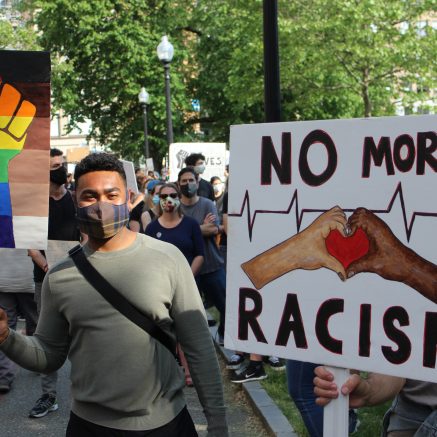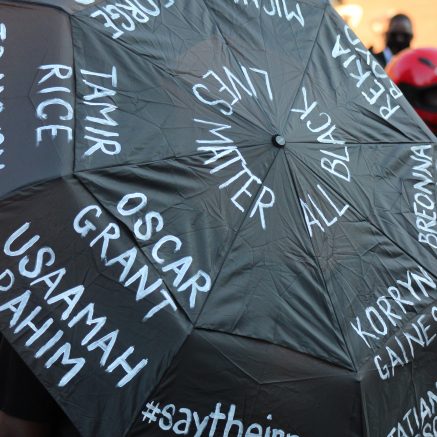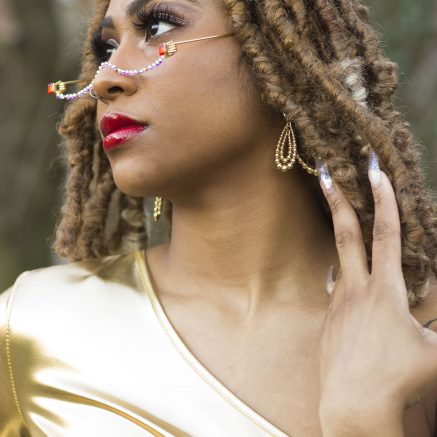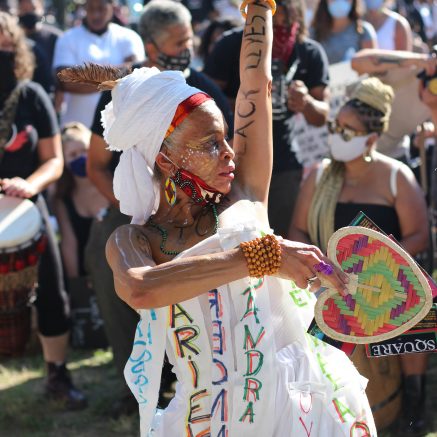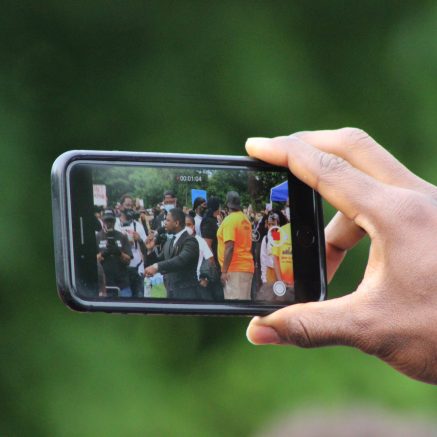Beautiful As I Am
The ideal of what it means to be beautiful lacks diversity. Reshaping that is critical, as we continue to celebrate the beauty in blackness, today and every day.
“Can you remember who you were, before the world told you who you should be.”
Charles Bukowski
Against a backdrop of dark shades, a bright purple shirt invites us to find light in its message: “my Black is beautiful.” Its wearer stands out in the crowd, signaling pride and confidence in the beauty residing on the color of their skin. Western beauty standards have historically valued European features and complexion while belittling Black features, but individuals have long challenged this notion, with growing visibility. These movements empower individuals to cherish and adore the color of their skin. Just as the subject stands apart in the crowd, so does the beauty of being Black.
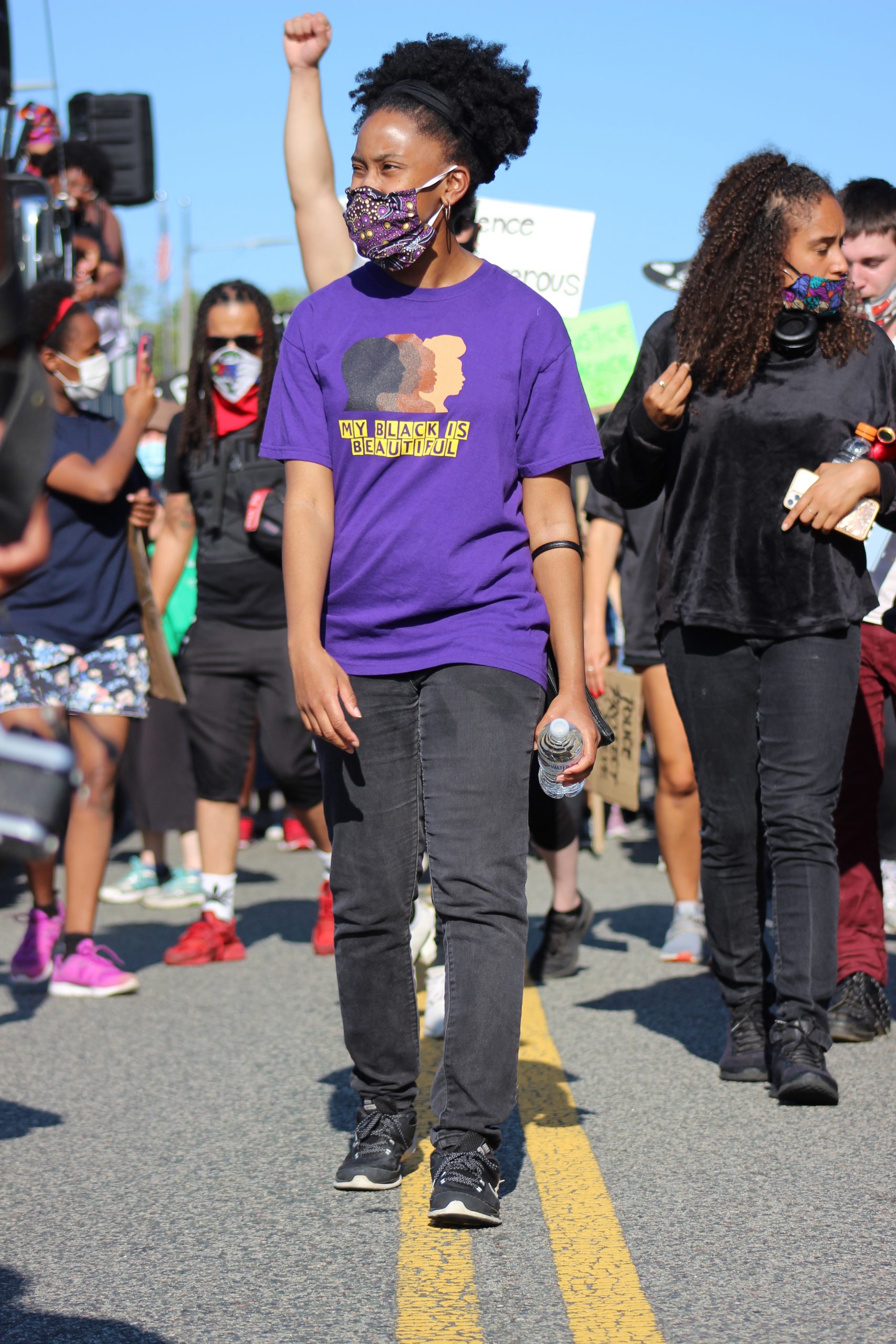
Amir Leung-Tat, Beautiful As I Am, 2020. Digital Photograph. ©Amir Leung-Tat. All rights reserved.
The idea of what is beautiful has been warped by society’s beauty standards which are Eurocentric and rooted in white supremacy. Black people are told they must adhere to the white beauty standards that discriminate against them. To combat this, the Black is Beautiful movement that started in the 1960s encouraged Black people to reject eurocentric beauty standards by embracing their Afrocentric beauty features. To embrace your identity, in the midst of constantly being told that your proximity to whiteness determines how beautiful you are, is truly an ultimate act of self-love as shown by the young individual wearing a shirt that says, “My Black is Beautiful” during a 2020 Black Lives Matter protest in Boston, MA.
